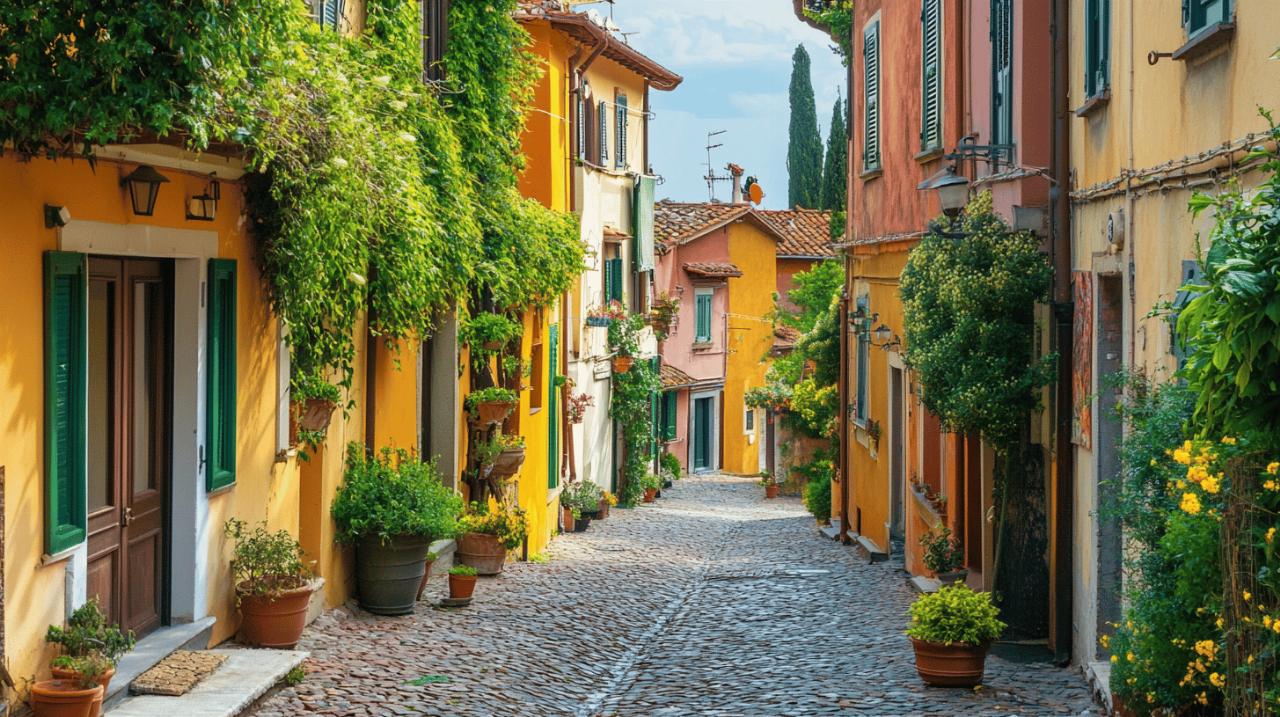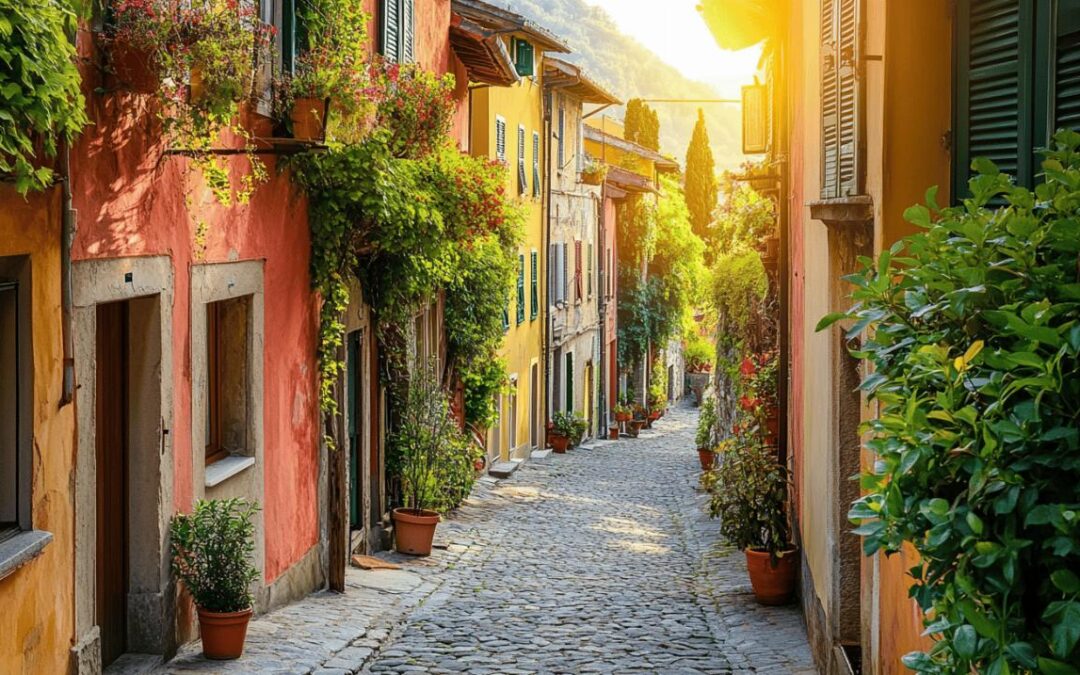Italy’s property market is experiencing a fascinating phenomenon that’s capturing the imagination of homebuyers worldwide: the €1 house initiative. This scheme, which began in 2017, offers seemingly impossible property deals in some of Italy’s most charming yet underpopulated regions. For those dreaming of owning a slice of Italian paradise without breaking the bank, these opportunities present an intriguing proposition that merits closer examination.
The italian dream: €1 property schemes explained
The €1 house scheme represents a creative solution to a growing problem in rural Italy: depopulation. As younger generations migrate to urban centers for work and lifestyle opportunities, many picturesque villages face declining populations and abandoned properties. Domus Agency, a leading resource for property market information, reports that local councils initiated these schemes to breathe new life into their communities while securing abandoned buildings that might otherwise fall into disrepair.
The concept is straightforward yet revolutionary: properties are offered at the symbolic price of one euro to attract new residents and investment. However, the nominal purchase price comes with significant strings attached. Buyers commit to renovating these often dilapidated structures within specific timeframes, typically three to five years, depending on the village’s regulations.
Discovering regions with bargain properties
The €1 house initiative spans various regions across Italy, each with its own unique charm and cultural heritage. Sicily has emerged as a particularly active area, with towns like Mussomeli selling between 350 and 400 houses to foreign buyers since launching their scheme in 2017. This Sicilian community currently offers approximately 20 properties at the symbolic €1 price point, alongside premium options ranging from €10,000 to €50,000 that require less extensive renovation work.
Other notable regions include Sardinia, where coastal proximity adds appeal to villages like Nulvi, located just 30-45 minutes from stunning Mediterranean beaches. In central Italy, Fabbriche di Vergemoli in the picturesque Apuan Alps of Tuscany offers mountain vistas and authentic Italian rural living. Southern regions such as Campania and Puglia have also embraced the initiative, with Zungoli now in its fourth round of property offerings and Biccari attracting interest from retirees and second-home seekers.
Eligibility requirements for foreign buyers
Foreign buyers face few restrictions when participating in these schemes, making them accessible to international investors. The primary requirements focus on commitment to renovation rather than citizenship or residency status. Most towns require a refundable deposit, typically around €5,000, which is returned once renovation obligations are met.
The application process varies by location but generally involves submitting renovation plans for approval by local authorities. Some villages have implemented competitive selection processes as interest has grown, with preference sometimes given to buyers who plan to establish permanent residency or contribute to local economic development through business ventures.

From purchase to renovation: the real costs
While the €1 price tag generates headlines, prospective buyers should understand that the true investment begins after purchase. Many of these properties have stood abandoned for decades, some for over a century following waves of emigration from southern Italy to America in the late 1800s and early 1900s. Consequently, they often require comprehensive structural rehabilitation.
Renovation costs constitute the significant financial commitment in these transactions. Most properties need new roofs, reinforced walls, updated plumbing and electrical systems, and modern amenities. According to industry estimates, refurbishment can cost a minimum of €600 per square meter, with total renovation budgets potentially reaching €250,000 for larger properties requiring extensive work.
American Meredith Tabbone, who purchased and renovated a property in Sambuca di Sicilia, documented her journey on social media, providing valuable insights into the renovation process and associated costs. Similarly, Barbara Märkl acquired a three-bedroom house for €15,000 and estimates spending an additional €35,000 on renovations, while Rubia Daniels has invested €38,000 on one of her three €1 houses, with another €12,000 in projected expenses.
Legal obligations and renovation deadlines
Each participating town establishes its own rules regarding renovation requirements and deadlines. Most commonly, buyers must complete exterior renovations within three years or forfeit their security deposit. Some locations have more stringent timelines, such as Cammarata, which requires renovation to begin within one year of application and completion within three years.
The pandemic and associated supply chain disruptions prompted some villages to extend their deadlines. For instance, Mussomeli temporarily doubled its renovation timeframe to accommodate delays in material procurement and construction scheduling. These flexibility measures demonstrate local authorities’ commitment to the success of these initiatives rather than merely collecting forfeited deposits.
Buyers should also prepare for Italy’s notorious bureaucracy, which can complicate the renovation process. Securing necessary permits, navigating building codes in historic areas, and coordinating with local tradespeople all present potential challenges, especially in remote locations with limited professional resources.
Budgeting for refurbishment projects
Creating a realistic budget requires careful consideration beyond the immediate construction costs. Additional expenses include legal fees for property transfer, utility connections, architectural services, and possibly temporary accommodation during renovation. Many successful buyers recommend allocating a contingency fund of at least 15-20% above estimated costs to account for unexpected discoveries during renovation.
An alternative approach gaining popularity involves seeking properties priced slightly higher but requiring less extensive renovation. Houses in reasonable condition can be found for approximately €35,000 in many of the same villages, potentially offering better overall value when total investment is calculated. These properties often represent a middle ground between the symbolic €1 purchases and fully renovated homes.
The recent strength of other currencies against the euro has created favorable conditions for international buyers, making both acquisition and renovation more affordable. This factor, combined with the post-pandemic property market in Southern Italy, has created a unique window of opportunity for those considering Italian property investment. With property transactions increasing by 11.2% in the first half of 2025 compared to the previous year, and prices rising by an average of 2.5% across Italy’s ten largest cities, these rural properties represent an increasingly attractive alternative to mainstream real estate options.

